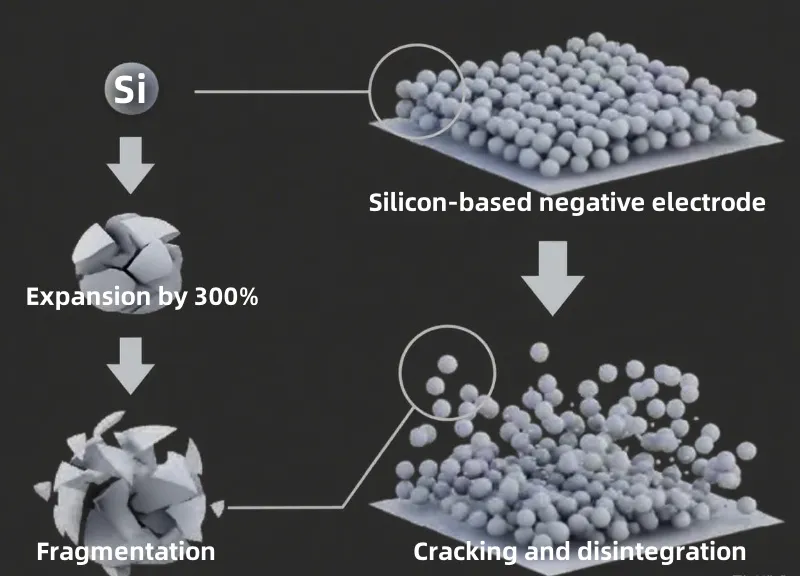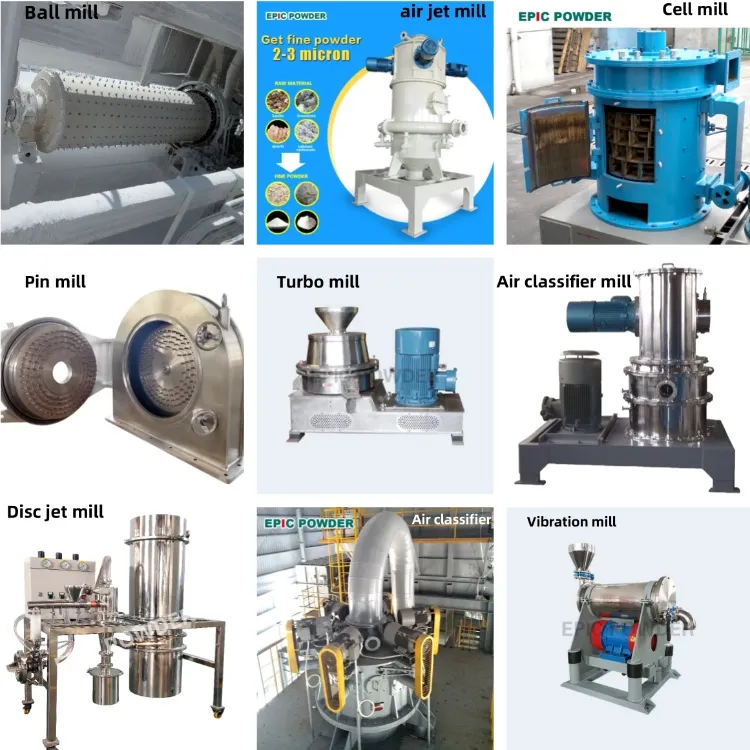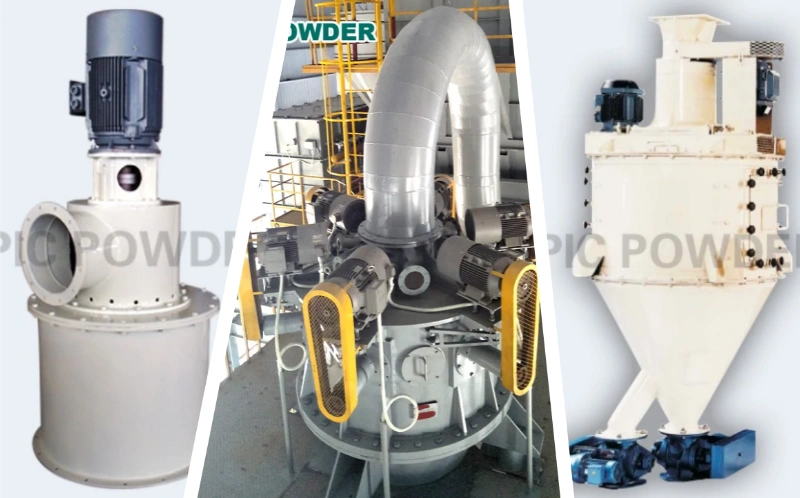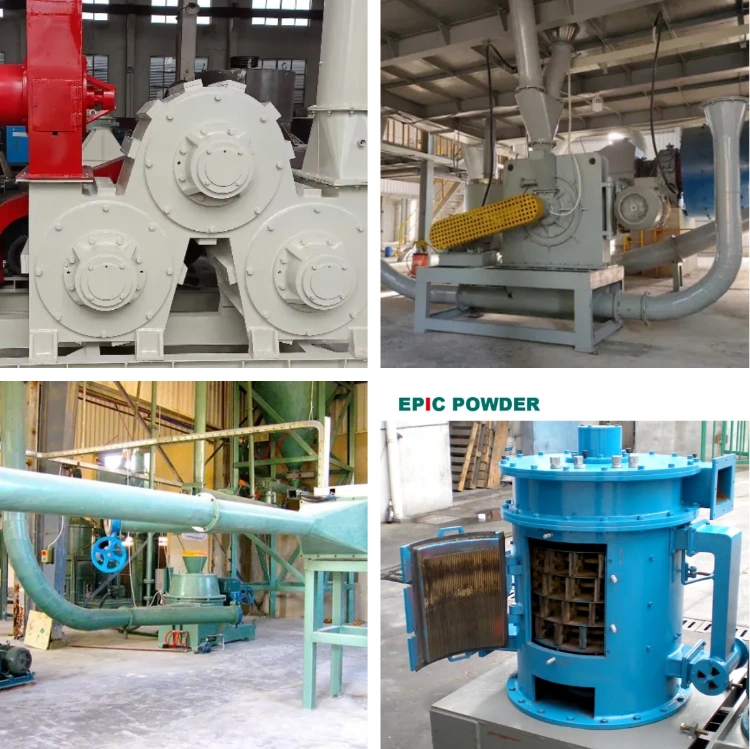In the production process of silicon-based anode electrodes, special equipment selection and configuration directly affect product quality and production efficiency. Compared with traditional graphite negative electrode production, silicon-based anode electrode production equipment has higher technical requirements. It also has stricter control accuracy. Silicon-oxygen and silicon-carbon negative electrodes have different process characteristics. Their core equipment also differs to some extent. But some general equipment can be shared. The following will detail key equipment and technical characteristics in silicon-based negative electrode production.

The Sublimation Furnace System
The sublimation furnace system is the core equipment for preparing silicon-oxide anode precursors. It is primarily used for synthesizing silicon monoxide (SiOx). Modern sublimation furnaces typically adopt a vertical design. They are divided into two functional areas: the lower heating zone and the upper deposition zone. The heating zone uses medium-frequency induction heating or silicon-molybdenum rod heating. Temperatures reach 1200–1800°C. The deposition zone has a water-cooled collection tray. A heat exchange system controls the condensation temperature, which ranges from 400–800°C. The sublimation furnace operates in a vacuum or low-pressure environment (0.01–1000 Pa). It requires a high-performance vacuum pump system and pressure control system. Advanced sublimation furnaces integrate online monitoring systems. These systems monitor temperature distribution and sublimation rates in real time. They ensure the uniformity and stability of SiOx composition.

Nano-silicon Preparation Equipment
The composite and dispersion equipment is essential for silicon-based anode. It includes high-speed mixers, bead mills, and ultrasonic dispersion systems. For the bead milling process, horizontal bead mills are commonly used. These are equipped with zirconia or tungsten carbide grinding media (mixed 3mm and 5mm). The grinding intensity and time are precisely controlled based on material properties. Shanghai Shanshan Technology innovatively combines ultrasonic dispersion with bead milling. This combination uses adjustable ultrasonic pretreatment to break particle agglomerates. After that, bead milling refines the particles, significantly improving dispersion.
The Composite and Dispersion Equipment
The composite and dispersion equipment is essential for silicon-based anodes. It includes high-speed mixers, bead mills, and ultrasonic dispersion systems. For the bead milling process, horizontal bead mills are commonly used. These are equipped with zirconia or tungsten carbide grinding media (mixed 3mm and 5mm). The grinding intensity and time are precisely controlled based on material properties.

Granulation and Drying Equipment
Granulation and drying equipment converts nano-silicon or silicon monoxide powder into secondary particles for further processing. Spray dryers are the most commonly used granulation equipment. They atomize silicon slurry mixed with binders into small droplets. Hot air rapidly dries the droplets into particles. A secondary granulation system developed by a research institute uses specially designed atomizers and hot air circulation systems. These systems produce uniform particles in the range of 30–50μm, improving the flowability of ultrafine powders. For solvent-based systems, vacuum dryers or disc dryers can also be used. Care must be taken to prevent explosion and solvent recovery issues. New fluidized bed granulation-drying units combine fluidization and spraying techniques. These systems offer higher granulation efficiency and better particle strength. They are gradually being applied in high-end silicon-based anode production.
Coating and Heat Treatment Equipment
Coating and heat treatment equipment enhance the electrochemical performance of silicon-based anode. This includes fluidized bed CVD systems, rotary furnaces, and tube furnaces. The fluidized bed reactor is ideal for carbon coating of silicon-oxide anodes. By precisely controlling fluidization gas speed (initial setting 8L/s) and temperature (600–1000°C), a uniform carbon layer is deposited. Advanced fluidized bed systems have preheaters (preheating temperature ≥400°C) and heat exchangers. These systems reduce energy consumption and minimize temperature fluctuations. For carbonization treatment of silicon-carbon anodes, rotary furnaces or push-plate kilns are used. The temperature range is typically 1000–1500°C, with treatment time of 2-5 hours.

Post-treatment Equipment
Post-treatment equipment includes crushing, classification, surface treatment, and packaging devices. Airflow mills are the mainstream equipment for ultrafine grinding. These mills use a collision-type design to avoid metal contamination. They crush materials to the desired particle size (typically D50<10μm). The classification system uses airflow classifiers for precise classification based on particle aerodynamics. Surface treatment equipment includes modification mixers and coating machines. These introduce functional coatings onto silicon-based materials. Magnetic separators remove metal impurities introduced during raw material preparation or production. They typically use multi-stage high-gradient magnetic separation. Packaging equipment operates in a dry atmosphere or vacuum environment. This prevents silicon-based materials from absorbing moisture and oxidizing.
The Automation Control System
The automation control system is the nerve center of modern silicon-based anode production lines. It coordinates control of various processes and collects data. Typical control systems include temperature and flow control modules. These modules monitor key parameters like reaction temperature in the sublimation furnace, deposition temperature in the deposition zone, reaction temperature in the fluidized bed, and preheater temperature. The system also collects production data, such as sublimation furnace yield, fluidized bed material input, gas flow, and output. This data is used to optimize the process and enable quality traceability. Advanced factories apply MES (Manufacturing Execution Systems) and industrial Internet technologies. These technologies allow for the digital and intelligent management of the entire production process.
| Equipment type | Main function | Key technical parameters |
| Sublimation furnace system | SiOx synthesis and deposition | Temperature 1200-1800℃, pressure 0.01-1000Pa |
| Nano silicon CVD equipment | Nano silicon powder preparation | Silane decomposition, particle size 20-100nm |
| Nano silicon PVD equipment | High purity nano silicon preparation | Plasma evaporation condensation, particle size <100nm |
| Sand mill dispersion system | Silicon-carbon composite and refinement | Grinding media 3/5mm, time 1-3h |
| Spray granulation tower | Secondary particle preparation | Particle size 30-50μm |
| Fluidized bed CVD system | Carbon coating treatment | Temperature 600-1000℃, gas velocity 8L/s |
| Atmosphere protection sintering furnace | Carbonization heat treatment | Temperature 1000-1500℃, time 2-5h |
| Air jet milling and classifying system | Ultrafine grading and classifying | D50<10μm, multi-level classification |
Conclusion
The silicon-based anode industry is developing rapidly. Its production equipment is evolving toward larger scale, continuous operation, and automation. For example, traditional batch-type sublimation furnaces are being replaced by continuous-feed designs. Multiple fluidized beds are linked in series. This achieves sequential coating of different functional layers. AI technology is being applied. It optimizes process parameters and predicts quality. These technological advancements will further enhance production efficiency of silicon-based anodes. They will also improve product consistency and cost competitiveness. This will accelerate their large-scale application in high-end power battery fields.
